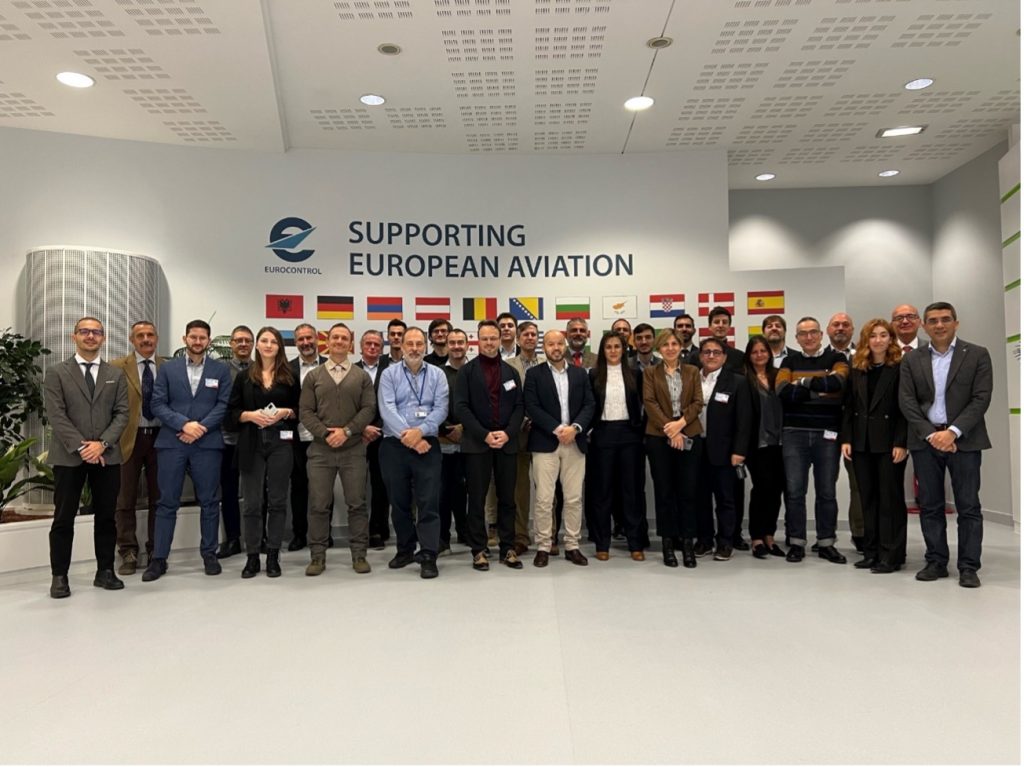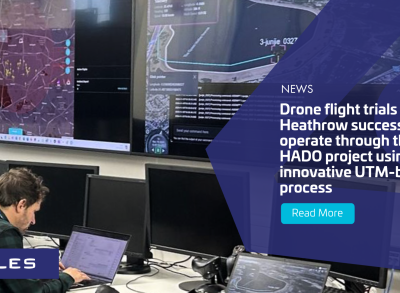European-wide U-space implementation gets off the ground with U-ELCOME Project

- U-ELCOME is kicking-off with funding from the European Commission’s CINEA in cooperation with SESAR 3 Joint Undertaking as one of its flagship Digital Sky Demonstrators (DSDs).
- As follow-up of a call launched by CINEA, the European Climate, Infrastructure and Environment Executive Agency, under the Connecting Europe Facility, U-ELCOME DSD project has been launched today as a 3-year project coordinated by the EUROCONTROL Innovation Hub and involving 51 European partners.
- This DSD project is part of an innovation pipeline to bridge the gap between applied/industrial research and industrialisation, and to accelerate the market uptake of U1 and U2 U-space services with the involvement of early movers, as well as a strong and close connection with relevant standardisation and regulatory activities and bodies.

Brussels, 23rd November 2022. In the wake of the Sustainable and Smart Mobility Strategy, the Commission has recently announced the launch of a series of Digital Sky Demonstrators (DSD) projects aiming to accelerate the market uptake of U-space and urban air mobility services.
These DSDs should contribute to the objectives set out in the EC Sustainable and Smart Mobility Strategy, but also to the “Action plan on synergies between civil, defence and space industries” which was adopted in February 2020, and which includes a “EU Drones Technologies Flagship” project.
Opening the sky to these new airspace users is a political and economic imperative for the EU. As described in the European ATM Master plan, these challenging objectives can only be achieved through an evolutionary development process ensuring the timely deployment and certification of appropriate, advanced and interoperable air and ground infrastructure, technology, and traffic management capabilities, providing an adequate level of services that fit with expected types of operations and levels of demand.
Drone Industry, key for the EU economy future
The development of drone services supported by a competitive industry can also strongly support Europe’s twin transition to green and digital economy and contribute to the post-COVID 19 recovery and the future resilience of the EU economy. From daily commuting, goods delivery to the proper functioning of global supply chains and the development of a wide-spectrum of new applications and services, drones are an enabler of our economic and social life.
The European Green Deal, as the new growth strategy for the EU, calls for the reduction of greenhouse gas emissions as well as the development of digitalisation. In this context, the transport system as a whole should be made smart and sustainable, with the use of electrically and hydrogen powered aircraft and digital services. In this framework, the EU needs to ensure the safe, efficient and sustainable development of drone operations, addressing other related societal concerns such as safety, security, privacy, social acceptance and environmental protection while simultaneously ensuring a sustainable economic environment for the European drone industry to grow.
Innovative U-space services and the development of smart, automated, interoperable, and sustainable traffic management solutions will be key enablers for achieving this high level of integration. These challenging objectives can only be achieved through an evolutionary process ensuring the development and timely deployment of appropriate, advanced and interoperable U-space infrastructure, technology, and traffic management capabilities, providing advanced services that fit with expected types of operation and levels of demand.
Following the adoption of a first EU regulatory framework for UAS (i.e. Delegated Regulation 2019/945 and Implementing Regulation 2019/947) and U-space (i.e. Implementing Regulation 2021/664), it is important to foster the uptake of this innovative operations in Europe.
15 locations in Italy, Spain and France to test and mature U-Space solutions
Building on the above mentioned regulations, several EU countries such as Italy, Spain, France have already started to invest in the development, procurement and certification of ad-hoc U-space systems to enable and properly manage the expected type of drone commercial operations.
U-ELCOME project is aiming at the fully scalable market uptake of U1 and U2 U-space services through a set of tests and demonstrations in various operational environments and European locations. To do so, U-ELCOME, under the coordination of EUROCONTROL Innovation Hub, will develop, test and demonstrate U-space U1 and U2 early solutions across 15 locations distributed in Spain, Italy and France.
Combining digital and physical infrastructure capabilities, U-ELCOME aims will set up, deploy and demonstrate up to Technology Readiness Level 8 the following SESAR solutions:
- U-space U1 — foundation services: the main objectives of which are to identify drones and operators and to inform operators about known restricted areas. With the deployment of U1, more drone operations are enabled, especially in areas where the density of manned traffic is low. The U-space foundation services include e-registration, e-identification and geo-awareness.
- U-space U2 — initial services: the main objective is to support the safe management of beyond the visual line of sight (BVLOS) operations and a first level of interface and connection with ATM/ATC and manned aviation. With the deployment of U2, the range of operations at low levels will increase, including some operations in controlled airspace. Drone flights will no longer be considered on a case-by-case basis, and some BVLOS operations will become routine. The U-space initial services will include at minimum the following: tactical geo-fencing, emergency management, strategic deconfliction, weather information services, tracking, flight planning management, monitoring, traffic information, drone aeronautical information management and procedural interface with ATC.
U-space system, a real interface with ATM system
U-ELCOME project will build on the outcomes of the previous European projects bridging from research, through industrialisation to implementation; at the same time the U-ELCOME project works in compliance with Regulation 2021/664 on a regulatory framework for the U-space and related amended 2017-373 and 923/2012 regulations. U-ELCOME relies on real U-space systems, which are in operation or to be deployed by ENAIRE, ENAV, ASLOGIC, ITG, D-Flight and Thales during the execution of the project.
The U-ELCOME demonstrations will interface the U-space set of services with existing ATM systems, and to each other. The U-space capabilities and U1 and U2 services of the pre-operational U-space ecosystems will be demonstrated in several live use cases in various operational environment, which represent the most typical missions for both business and civil authority use such as medicals and goods deliveries, Inspection flights, aerial works in urban and sub-urban environment, controlled and uncontrolled airspace.
The project, working in close cooperation with EASA and other international and national authorities and organisations, will also contribute to the consolidation of standardisation and regulatory requirements of the proposed U-space services to further accelerate the deployment of relevant U1 and U2 services and U-space based operations.
This project has received funding from European Climate, Infrastructure and Environment Executive Agency (CINEA) under grant agreement No. 101079171.





